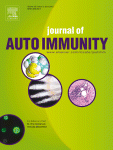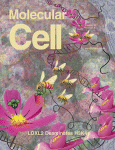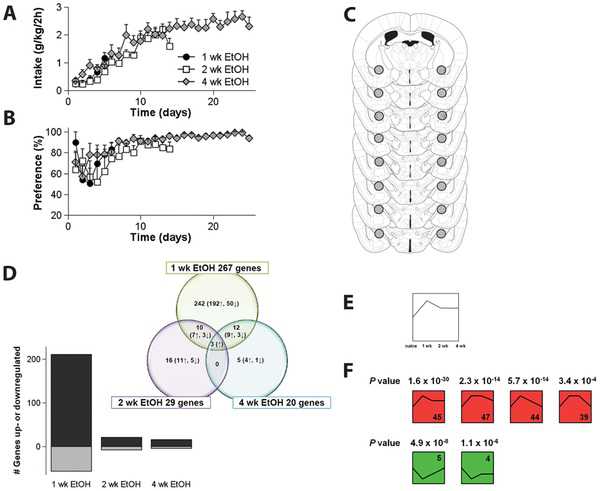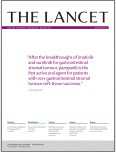J Autoimmun:自身抗体可能对AD患者发挥作用
2012-05-25 Beyond 生物谷
近日,新新泽西州学校完成的一项研究演示了死亡或受损的脑细胞如何释放碎片到血液中,然后产生特异性抗体即阿尔茨海默氏症和其他神经退行性疾病诊断可靠的早期生物标志物。研究人员还确定阿尔茨海默氏症发展的关键机制,这一关键过程也常见于类风湿关节炎等自身免疫性疾病。 这项研究发表在Journal of Autoimmunity杂志上。 Robert Nagele博士说:我们过去的研究表明,人体血液中含有可
近日,新新泽西州学校完成的一项研究演示了死亡或受损的脑细胞如何释放碎片到血液中,然后产生特异性抗体即阿尔茨海默氏症和其他神经退行性疾病诊断可靠的早期生物标志物。研究人员还确定阿尔茨海默氏症发展的关键机制,这一关键过程也常见于类风湿关节炎等自身免疫性疾病。
这项研究发表在Journal of Autoimmunity杂志上。
Robert Nagele博士说:我们过去的研究表明,人体血液中含有可能清除细胞碎片的成千上万的抗体,这些抗体可以被用来准确地诊断疾病如阿尔茨海默氏症和帕金森氏症等神经退行性疾病。研究人员发现,死亡的神经细胞释放受损的蛋白质会触发产生特定的自身抗体,自身抗体针对蛋白质碎片而产生,再某些自身免疫性疾病中看到类似的反应。
研究人员集中在PADs酶的作用,该酶能将一种氨基酸转化成另一种氨基酸。阿尔茨海默氏症和健康对照者死后检查大脑组织后,研究人员发现阿尔茨海默氏症患者瓜氨酸蛋白质的积累以及PAD酶影响大脑区域中的神经元。此外,他们证实PTCD2(已被证明是阿尔茨海默氏症的强有力的标志物)在阿尔茨海默氏症的脑组织标本的神经细胞中以瓜氨酸形式存在。研究结果表明神经细胞死亡时,它们将其内容物释放到大脑周围的液体中。然后细胞仍然会进入血液,他们存在的目的就是产生靶向神经元碎片的特异性抗体。
作者说:我们以前完成的研究所提供的证据说明这些抗体可能透过血脑屏障返回到大脑中。 一旦这一情况出现,抗体会选择性地结合到神经元表面,破坏脑细胞的功能,加快β淀粉样蛋白的沉积,导致阿尔茨海默氏病。

doi:10.1016/j.jaut.2012.03.004
PMC:
PMID:
Neuronal PAD4 expression and protein citrullination: Possible role in production of autoantibodies associated with neurodegenerative
Nimish K. Acharya, Eric P. Nagele, Min Han, Nicholas J. Coretti, Cassandra DeMarshall, Mary C. Kosciuk, Paul A. Boulos, Robert G. Nagele
Peptidyl arginine deiminases (PADs) catalyze a post-translational protein modification reaction called citrullination, where arginine is converted to citrulline. This modification has been linked to the pathogenesis of autoimmune diseases including rheumatoid arthritis (RA). More recently, several studies have suggested that Alzheimer's disease (AD), a devastating neurodegenerative disorder, may have an autoimmune component. In the present study, we have investigated the possibility that expression of PADs and protein citrullination plays a role in the production of brain-reactive autoantibodies that may contribute to Alzheimer's-related brain pathology. Here, we report the selective expression of the PAD isoforms, PAD2 and PAD4, in astrocytes and neurons, respectively, and the concomitant accumulation of citrullinated proteins within PAD4-expressing cells, including neurons of the hippocampus and cerebral cortex. Expression of PADs and citrullinated proteins is prominent in brain regions engaged in neurodegenerative changes typical for AD pathology. Furthermore, we also demonstrate that the pentatricopeptide repeat domain2 (PTCD2) protein, an antigen target of a prominent AD diagnostic autoantibody, is present in a citrullinated form in AD brains. Our results suggest that disease-associated neuronal loss results in the release of cellular contents, including citrullinated proteins, into the brain interstitium. We propose that these citrullinated proteins and their degradation fragments enter into the blood and lymphatic circulation, and some are capable of eliciting an immune response that results in the production of autoantibodies. The long-term and progressive nature of AD and other neurodegenerative diseases results in chronic exposure of the immune system to these citrullinated products and may drive the continual production of autoantibodies.
本网站所有内容来源注明为“梅斯医学”或“MedSci原创”的文字、图片和音视频资料,版权均属于梅斯医学所有。非经授权,任何媒体、网站或个人不得转载,授权转载时须注明来源为“梅斯医学”。其它来源的文章系转载文章,或“梅斯号”自媒体发布的文章,仅系出于传递更多信息之目的,本站仅负责审核内容合规,其内容不代表本站立场,本站不负责内容的准确性和版权。如果存在侵权、或不希望被转载的媒体或个人可与我们联系,我们将立即进行删除处理。
在此留言













